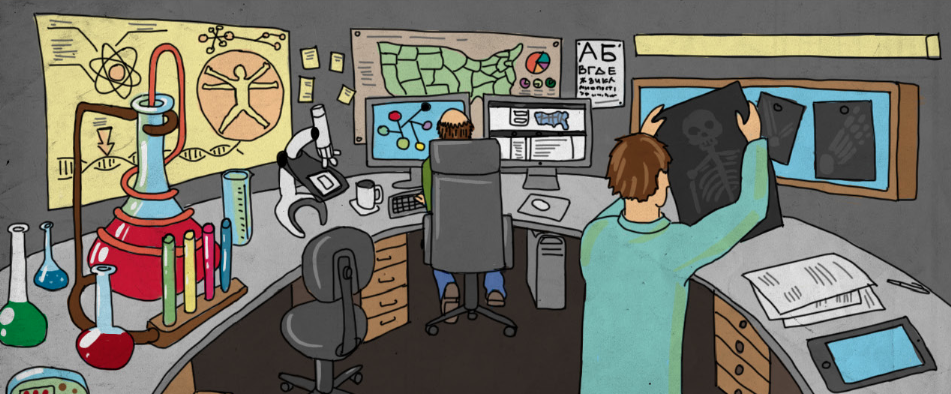How is a new pharmaceutical product developed? It goes through a slow and expensive clinical trial process to check for effectiveness and safety. Those R&D organizations who used to stick to the traditional non-digital approach, have spent a lot of time and money while relying on paper diaries and obsolete software to get the results. To take action, the industry begins to adopt digital transformation and modernize the clinical trials value chain with data-driven software solutions, innovative technologies, and healthcare software development services.
Many life science companies have already started bringing single solutions to the clinical trial process, like connected health devices or electronic signatures. But few are ready to digitalize clinical trials all the way through.
According to Skyquest research, the pharma market will experience a compound annual growth rate (CAGR) of 5.9% from the period of 2023 to 2030.
That’s why in our new article, we put our focus on the digital transformation of clinical trials process and software solutions that power up each stage of it.
Stage 1. Pre-study
Pre-study, or trial design stage is a complex process that covers everything from defining inclusion and exclusion criteria to setting recruiting targets, data collection, building strategies and checking feasibility. The main goal here is to understand what is the most critical for the specific trial by gaining insights from real patients through connected health devices, health records and patient interactions.
That’s where digital technologies come into play: clinical trials organizations can leverage cloud technologies real-world evidence (RWE) and real-world data (RWD) for the collection, storage, and analysis of information. Surprisingly, even this may be not enough. To analyze the needs of a broader patient community, R&D companies should consider patient feedback given on social media, interactive patient websites, mobile apps, and discussion forums.
Stage 2. Study Start-Up
Start-up stage embraces site recruitment, retention and monitoring. These activities are normally associated with a lot of paperwork caused by legal requirements to the documentary: investigator agreements, financial disclosure dorms, approval letters, etc. What is more, all the papers are generally good for a year, while a trial may last much longer. Digitalization with the help of centralized document management software helps reduce the administrative burden by treating document flow as a continuous process with automatic renewal of expired documents.
Which clintech solutions may empower study start-up process?
- Robotic automation of digital calendar with email generation to notify about upcoming documentation updates or renewals help guide the entire process.
- Natural language processing help analyze investigators CVs, licenses, and financial disclosures to understand whether they are already on file and are updated.
- Artificial intelligence tools could leverage predictive analytics to improve site selection, enhance value, and reduce costs.
All-in-all, digitalization must leverage paperless collaboration, consistency in document formats, 24/7 access to all the records within a secure cloud-based storage.

Stage 3. Trial conduct:
Patient identification and recruitment delay burdens are the main reasons for cost overruns in clinical trials conduct. However, the trial doesn’t end up after participants are found. All the effort from researchers and patients may be made in vain unless it is properly registered, monitored and reported.
To find a better way to meet these challenges, and improve data quality for good measure, pharmaceutical, biotechnology, and medical device companies start implementing wireless technologies into their clinical trials conduct. This refers to a IoT solutions, namely incorporating sensors for digital biomarkers collection: connected health devices, such as inhalers, digestible trackers, wearables and smartphone apps that control health remotely. They have already become a valuable source of physiological indicators of patient’s activity, sleep, blood pressure, ECG and more.
Being integrated to the clinical trial management system, connected health devices allow researchers to get data in real time reducing data loss and eliminating the need to edit and clean measurements which leads to better data integrity and uncompromised trial results.
Stage 4. Data-driven decision-making
A lot has been said about remote data capture and patient engagement but we should not forget about what is the final outcome of data precision achieved by digital transformation. The end client needs to take advantage of reports and analytics and keep improving the areas and tools for data collection real-time, or even, predicting them before they take place.
Based on the reports on clinical trials results, machine learning algorithms could leverage EHRs to identify desired patients to recruit according to the inclusion and exclusion criteria and avoid low-performing sites.
Big Data in clinical trials
Machine learning, natural language processing, and sets of big data have enabled clinical trial teams to rely on external resources rather than putting the focus on internal databases and personal referrals. During the past decade, R&D companies have started purchasing anonymized patient data which helps them significantly improve their performance while enhancing the research selection. So, what are the reasons for purchasing big data sets rather than relying on internal sources:
- the rarity of disease – it might be difficult to find at least 10 patients with the same rare disease;
- patient dropouts – patients may resign from therapy or die;
- high cost – conducting a trial costs a lot of money;
- ethics – some placebo-based trials are unethical while they may affect patients’ health.
However, mind that these sets lack enrollment data and become actionable only upon predictive modeling that allows to generate structured information out of data sets and make meaningful decisions on its basis.
Final takeaway
No doubt that it’s time for R&D organizations to get in the game of digital transformation. While some of them are just adopting single tools or solutions, like wearables, or robotic automation, others disrupt the whole value chain to skim the cream from precise and insightful results.
To transform clinical trials process and satisfy stakeholders’ expectations, companies should build their specific digital strategy with the help of technology experts.
Check out our recent #clintech projects:
Clinical research management system – a SaaS platform that allows R&D companies to streamline the execution and commercialization of global clinical trials and enhance partner collaboration without administrative burdens.
Healthcare data anonymization platform – a system that empowers clinical research with enhanced communication, custom workflows and leverages accurate and organized data entry and monitoring.
Contact us and learn how your company can start clintech transformation.









